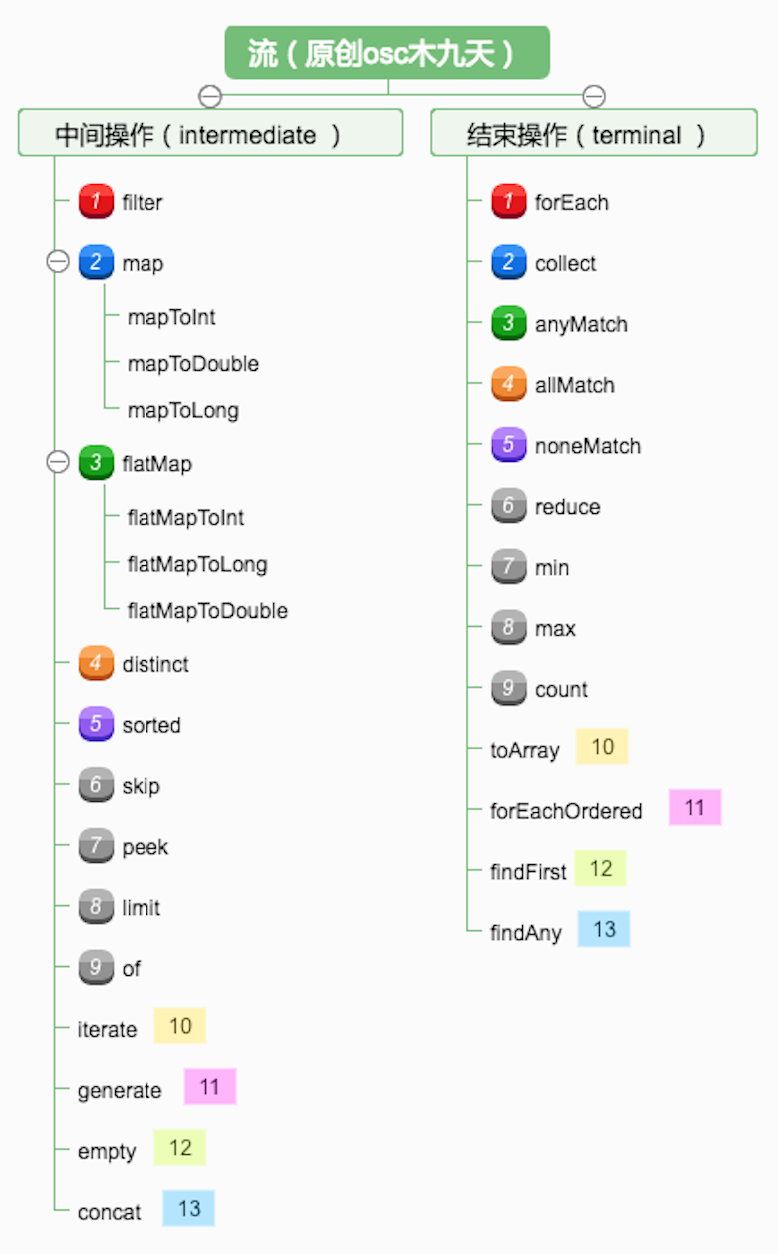jdk1.7新特性详解
开发期间略知jdk1.7的一些特性,没有真正的一个一个得展开研究,而是需要说明再去查,导致最整个新特性不是特别的清楚,这种情况以后得需要改变了,否则就会变成代码的奴隶。现在正好有时间可以细细的研究研究了。文章主要参照oracle jdk1.7的官方地址:https://docs.oracle.com/javase/7/docs/technotes/guides/language/enhancements.html#javase7
try-with-resources 资源的自动管理
try-with-resources 声明是try 一个或多个资源的声明。一个资源作为一个对象在程序结束之后必须关闭它。try-with-resources声明保证每一个资源都会被关闭在声明结束的时候。任何实现了java.lang.AutoCloseable接口或者实现了java.io.Closeable,可以作为一个资源。
下面的例子从文件中读取第一行。用到了BufferedReader得实例去从文件中读取数据。BufferedReader是一个资源,在程序完成之后必须关闭。
static String readFirstLineFromFile(String path) throws IOException {
try (BufferedReader br = new BufferedReader(new FileReader(path))) {
return br.readLine();
}
}
在这个例子中,在try-with-resources语句中声明的资源是BufferedReader。声明语句出现在try关键字后面的括号内。BufferedReaderJava SE 7及更高版本中的类实现了接口java.lang.AutoCloseable。由于BufferedReader实例是在try-with-resource语句中声明的,因此无论try语句是正常还是意外完成(由于方法BufferedReader.readLine抛出IOException),它都将被关闭。
在Java SE 7之前,无论try语句是正常还是意外完成,都可以使用finally块来确保资源已关闭。以下示例使用finally代替try-with-resources语句的块:
static String readFirstLineFromFileWithFinallyBlock(String path) throws IOException {
BufferedReader br = new BufferedReader(new FileReader(path));
try {
return br.readLine();
} finally {
if (br != null) br.close();
}
}
然而,在这个例子中,如果方法readLine和close都抛出异常,方法readFirstLineFromFileWithFinallyBlock则抛出由finally块抛出的异常,由try块排除的异常将会被抑制。相反,在例子readFirstLineFromFile中,如果try块和try-with-resources声明都抛出异常,方法readFirstLineFromFile则抛出由try块抛出的异常,由try-with-resources抛出的异常将会被抑制。
您可以在try-with-resources语句中声明一个或多个资源。以下示例将检索打包在zip文件zipFileName中的文件的名称,并创建一个包含这些文件名称的文本文件:
public static void writeToFileZipFileContents(String zipFileName, String outputFileName)
throws java.io.IOException {
java.nio.charset.Charset charset = java.nio.charset.Charset.forName("US-ASCII");
java.nio.file.Path outputFilePath = java.nio.file.Paths.get(outputFileName);
// Open zip file and create output file with try-with-resources statement
try (
java.util.zip.ZipFile zf = new java.util.zip.ZipFile(zipFileName);
java.io.BufferedWriter writer = java.nio.file.Files.newBufferedWriter(outputFilePath, charset)
) {
// Enumerate each entry
for (java.util.Enumeration entries = zf.entries(); entries.hasMoreElements();) {
// Get the entry name and write it to the output file
String newLine = System.getProperty("line.separator");
String zipEntryName = ((java.util.zip.ZipEntry)entries.nextElement()).getName() + newLine;
writer.write(zipEntryName, 0, zipEntryName.length());
}
}
}
在此示例中,try-with-resources语句包含两个用分号分隔的声明:ZipFile和BufferedWrite。当直接跟随它的代码块正常结束或由于异常而终止时,close这些BufferedWriter和ZipFile对象的方法将按此顺序自动调用。请注意,close资源的方法是按照与创建相反的顺序来调用的。
捕捉多个异常类型和对重新抛出异常的高级类型检查
处理大于一种类型的异常
在JAVA SE 7 以及以后的版本中,一个简单的catch块可以处理大于一种类型的异常。这个功能可以减少代码重复并且减少了对捕获广泛异常的诱惑。
注意下面的例子,每一个catch块都包含重复代码
catch (IOException ex) {
logger.log(ex);
throw ex;
catch (SQLException ex) {
logger.log(ex);
throw ex;
}
在Java SE 7以前的版本中,创建一个通用的方法来消除重复的代码是很困难的,因为变量ex有不同的类型。
以下示例在Java SE 7及更高版本中有效,可消除重复的代码:
catch (IOException|SQLException ex) {
logger.log(ex);
throw ex;
}
该catch子句指定类型的块处理异常的,以及每个异常类型与竖线分割(|)。
注意:如果一个catch块处理多个异常类型,则该catch参数是隐式的final。在这个例子中,这个catch参数ex是final,所以你不能在这个catch块中赋值。
一个catch块处理多个异常编译生成的字节码要比多个catch块且每个只处理一个异常生成的字节码要小的多,并且优化。一个catch块处理多个异常的代码块通过编译器生成的字节码代码不重复,字节码没有对异常处理程序的复制。
JDK8
1、Lambda 演变过程
2、StreamAPI 详解
3、Date
StreamAPI 详解

功能
父类:BasicStream
子类:Stream、IntStream、LongStream、DoubleStream
包含两个类型,中间操作 (intermediate operations) 和结束操作 (terminal operations)
下面是所有方法的属于那一端操作的方法:

//1.将集合转换成流
list.stream();
//2.forEach 遍历
list.forEach(System.out::println);
//3.filter过滤
list.stream().filter((e) -> e.getStar().equals("天秤座")).forEach(System.out::println);
Optional<Student> optionalStudent = list.stream().filter((e) -> e.getStar().equals("天秤座"))
.findAny();
Student student = optionalStudent.get();
//4.map 转换集合
List<String> names = list.stream().map(Student::getName).collect(Collectors.toList());
names.stream().forEach(System.out::println);
Map<String, Object> map = new HashMap<>();
map.put("key1","1");
map.put("key2","1");
map.put("key3","1");
map.put("key4","1");
List<String> cidList = map.keySet().stream().map(String::toString).collect(Collectors.toList()); System.out.println(cidList);
//5.mapToInt 转换数值流
IntStream intStream = list.stream().mapToInt(Student::getAge);
Stream<Integer> integerStream = intStream.boxed();
Optional<Integer> max = integerStream.max(Integer::compareTo);
System.out.println(max.get());
//6.flatMap 合并成一个流
List<String> list2 = new ArrayList<>();
list2.add("aaa bbb ccc");
list2.add("ddd eee fff");
list2.add("ggg hhh iii");
list2.add("ggg hhh iii");
list2 = list2.stream().map(s -> s.split(" ")).flatMap(Arrays::stream).collect(Collectors.toList());
System.out.println(list2);
//7.distinct 去重
list2.stream().distinct().forEach(System.out::println)
//复杂去重
// List<RedPacketRecord> newList = records.stream().collect(Collectors.collectingAndThen(Collectors.toCollection(() -> new TreeSet<>(Comparator.comparing(RedPacketRecord::getRoomId))), ArrayList::new));
//8、sorted 排序
//asc排序
list.stream().sorted(Comparator.comparingInt(Student::getAge)).forEach(System.out::println);
System.out.println("------------------------------------------------------------------");
//desc排序
list.stream().sorted(Comparator.comparingInt(Student::getAge).reversed()).forEach(System.out::println);
//9、skip 跳过前 n 个
list.stream().skip(1).forEach(System.out::println);
//10、limit 截取前 n 个
list.stream().limit(1).forEach(System.out::println);
//11、anyMatch
boolean isHave = list.stream().anyMatch(student2 -> student2.getAge() == 16);
System.out.println(isHave);
//12、allMatch
boolean isHave2= list.stream().allMatch(student2 -> student2.getAge() == 16);
System.out.println(isHave2);
//13、noneMatch
boolean isHave3 = list.stream().noneMatch(student2 -> student2.getAge() == 16);
System.out.println(isHave3);
//14、findAny
Optional<Student> student = list.stream().findAny();
System.out.println(student.get());
//15、findFirst
Optional<Student> student = list.stream().findFirst();
System.out.println(student.get());
//17、count 计数
long count = list.stream().count();
System.out.println(count);
//18、of
Stream<String> stringStream = Stream.of("i","love","you");
//19、empty
Stream<String> stringStream2 = Stream.empty();
//20、iterate
List<String> list = Arrays.asList("a", "b", "c", "c", "d", "f", "a");
Stream.iterate(0, i -> i + 1).limit(list.size()).forEach(i -> {
System.out.println(String.valueOf(i) + list.get(i));
});
//21、collect:averagingLong
// 求年龄平均值
Collector<Student, ?, Double> studentDoubleCollector = Collectors.averagingLong(Student::getAge);
Double average = list.stream().collect(studentDoubleCollector);
//22、collect:collectingAndThen
// 求年龄平均值
String average2 = list.stream().collect(Collectors.collectingAndThen(Collectors.averagingInt(Student::getAge), a->"哈哈,平均年龄"+a));
System.out.println(average2);
//23、collect:counting
// 求数量
Long num = list.stream().collect(Collectors.counting());
System.out.println(num);
//24、collect: groupingBy(Function)
Map<Integer,List<Student>> result = list.stream().collect(Collectors.groupingBy(Student::getAge));
for (Integer age:result.keySet()){
System.out.println(result.get(age));
}
//25、collect:groupingBy(Function,Collector)
// 先分组,在计算每组的个数
Map<Integer,Long> num = list.stream().collect(Collectors.groupingBy(Student::getAge,Collectors.counting()));
System.out.println(num);
//26、collect:groupingBy(Function, Supplier, Collector)
// 先分组,在计算每组的个数,然后排序
Map<Integer,Long> num = list.stream().collect(Collectors.groupingBy(Student::getAge, TreeMap::new,Collectors.counting()));
System.out.println(num);
//27、collect:groupingByConcurrent
// 同上,不过这个 Concurrent 是并发的,也有 3 个方法,和上面非并发一个效果
// groupingByConcurrent(Function)
// groupingByConcurrent(Function, Collector)
// groupingByConcurrent(Function, Supplier, Collector)
//28、collect:joining()
// 名字拼接
String result3 = list.stream().map(Student::getName).collect(Collectors.joining());
System.out.println(result3);
//29、collect:joining(str)
// 名字拼接,用逗号隔开
String result4 = list.stream().map(Student::getName).collect(Collectors.joining(","));
System.out.println(result4);
//30、collect:joining(str, prefix, suffix)
// 名字拼接,包含前缀、后缀
String result5 = list.stream().map(Student::getName).collect(Collectors.joining(",","hello","world"));
System.out.println(result5);
//31、collect:summarizingDouble
// 求年龄的最大值、最小值、平均值、综合以及人数
DoubleSummaryStatistics result6 = list.stream().collect(Collectors.summarizingDouble(Student::getAge));
System.out.println(result6);
//32、collect:toCollection
import lombok.AllArgsConstructor;
import lombok.Data;
import lombok.NoArgsConstructor;
import lombok.ToString;
/**
* @ClassName Student
* @Author: c-wangjz02
* @Description:
*/
@Data
@ToString
@NoArgsConstructor
@AllArgsConstructor
public class Student {
//名字
private String name;
//性别
private String sex;
//薪水
private int salary;
//年龄
private int age;
//星座
private String star;
}





















 3945
3945











 被折叠的 条评论
为什么被折叠?
被折叠的 条评论
为什么被折叠?








